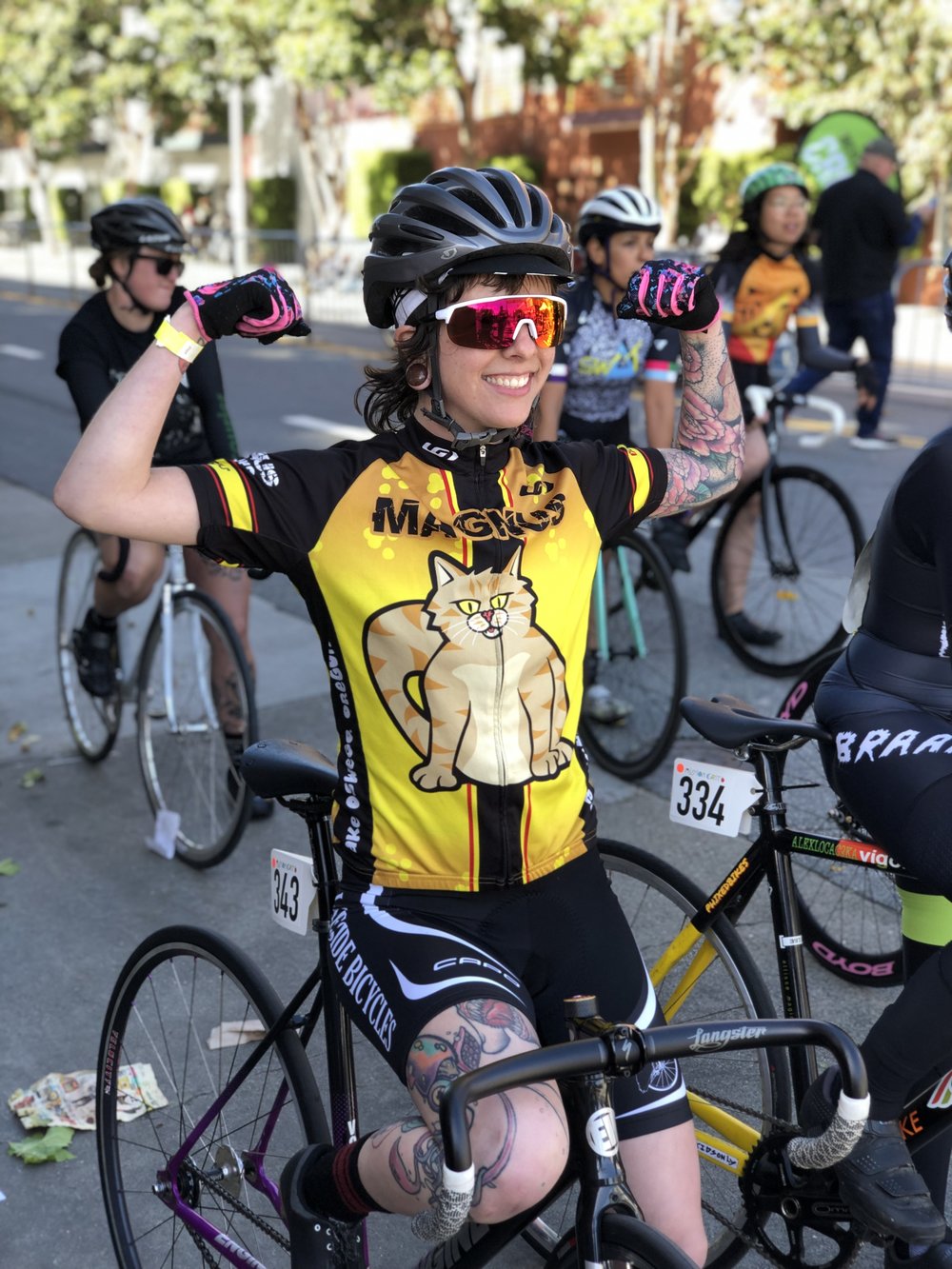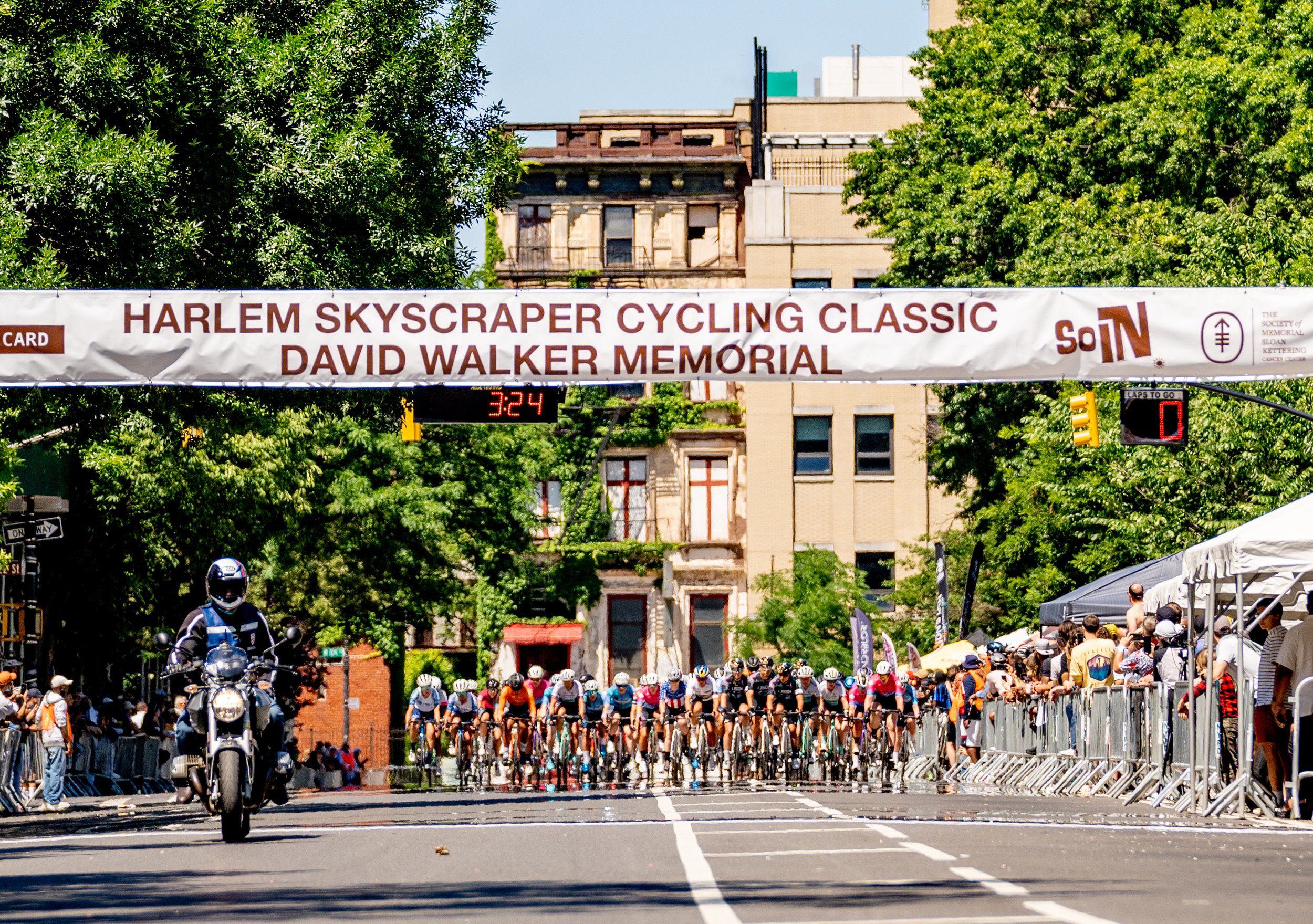A Bittersweet Day At The Race Avenue Crit

Team rider Steve Rousseau had one of the most eventful races of his life at Lancaster’s Race Avenue Crit. He also witnessed some of the worst treatment of a women’s field in his life.
A big thank you to the gentleman who took this photo of me and then immediately asked me for my number so he could send it to me. You rule.
One of the incredible feats of the human mind is the ability to feel two conflicting emotions at the same time. Anger and happiness. Relief and anxiety. Pride and embarrassment. My day at the Race Avenue Criterium in Lancaster, PA really put that to the test.
Let’s get the particulars out of the way. The Race Avenue Crit is a mile-long four-corner course that gently slopes down on one side and rises on the other. At the time of my race it was approaching 90 F.
The way my race played out was fairly simple. I attacked on the second lap. I rode solo for a few laps, and then was joined by two other riders. We worked together, and eventually lapped the field with only a handful of laps to go. On the final lap I got a flat on the penultimate corner and ended up jogging across the line with my bike for third place. It’s the most I’ve ever done in a bike race.
Which: great, awesome. Good for me. The thing about being at a bike race, however, is that other people get to race their bikes too. Young. Old. Newcomers. Veterans. Men. Women. In an ideal world, this is the beauty of the amateur bike race — a universal, inclusive celebration of going fast on bicycles. The Race Avenue Crit was not a universal, inclusive celebrating of going fast on bicycles. It was far from that.
Let us first examine the field structure: A men’s 55+ field, a men’s 45+ field, a men’s 35+ field, a men’s cat 4/5 field, a men’s cat 3/4 field, a men’s cat 1/2/3 field and… a women’s 1/2/3/4/5 handicap race. That’s six men’s fields and one women’s field raced in an unorthodox format.
Did the women ask to have their race organized this way? They did not. In fact, this structure was used last year, and concerns were raised about the handicap format — namely, that it was not good. Every other field gets to race their own race, why does the women’s field have to race this way? Granted, there are so many hours in the day, so a condensing must happen somewhere. Why not offer one less masters field, or better yet, condense two of the masters fields into a handicap race? These questions very well might have been fielded by the promoter, but given that the 2018 edition brought back the women’s handicap race, it answer was more or less “Who cares?”
Things didn’t improve once the actual race went off. For those unaware, a handicap race format involves multiple field starts but a single finish. The idea is that if you set off off the slower fields first, and then the faster fields afterwards, things should work out to everyone finishing together. On long, point-to-point road race courses it makes sense. On a mile-long crit course, it doesn’t. Sure, a handicap race on a crit course is certainly an interesting racing experience for those willing to sign up for it. But if you’re a woman, and you wanted to race the Race Avenue Crit with your peers, you didn’t really have a choice. That only the women’s field had to race this way also didn’t help. Everyone else got a normal race, while the women had to play this cat-and-mouse game for, seemingly, the enjoyment of the announcer and the crowd at the expense of the racers.
Shockingly, things did not improve after the race. Immediately after the race there was a “results issue.” While every single field that had raced on the day got a nice printout of camera-verified and timed results, the women’s field had two pieces of paper with race numbers written in. Some women weren’t even scored.
Despite this informal results recording process, the podium was easy to sort out. Seemingly against the will of the promoter, two category 4 women, Stephanie Ritter and Marlina Hardy, managed to stay away the entire race — and in the process walked away with three early race primes and first and second overall. An incredible story right? Two incredibly talented Cat 4 riders manage to best a field of experienced racers. And what did they get for their efforts? Marlina, who finished second, walked away with $60. For comparison, I finished third in a Cat 3/4 race, and I was awarded the same amount. How can that be?
It would be one thing to ask women to race this unorthodox race format, but then pay them as much as the men’s pro race. It’s so much more troubling and frustrating that you would ask women to race a handicap crit race, award handful of primes during the race, and then pay the person who won two primes and eventually placed second the same amount you’d pay a man who placed third in the Cat 3/4 race. It’s simply not right.
Now, I know all the arguments. I know the masters riders are registering for races in greater numbers compared than women. (The sport is predominately male.) I know that promoting a bike race can be a thankless job and then you have to deal with razor-thin margins. I know that, thanks to the beauty of capitalism, the women are free to take their money elsewhere. But is that what we really want to be telling people?
Consider this: It’s easy to go to a bike race and become wholly focused on your own experience. You register, you show up, you do your routine, you do your race and then you go home. But it’s your experience that shapes the experience of others. That the women’s field is run this way isn’t because of the women, it’s because there are three masters fields. And I’m sure the masters riders would never want to impact the experience of women, but when you’re asking — and I’m assuming that the only reason why you would run three separate masters fields at a crit is because it was asked for — that a race make specific considerations for you, that comes as the cost of others. You might not be actively demanding that they women’s field be condensed into a single race, or that it’s paid less or even that it’s raced in a handicap format — but that’s a decision that you’re pushing the promoter towards making.
Which is all to say that if we want to grow the sport, we all have to take some accountability, some responsibility. Cycling is an incredibly difficult and expensive sport. We have to recognize that even though your personal experience is fine, when others suffer, the sport suffers. Do we really want bike races to just be a field of middle-aged men after middle-aged men after middle-aged men? As a future middle-aged man: I don’t.
I had the most incredible race at the Race Avenue Crit. So did Marlina. It’s upsetting that at every step of the way — from the field structure, to the results to the payout — the race let her down. The $60 I won falls short of getting her the prize money she deserves, but I’m going to give it to her anyway. If the way the Race Avenue Crit is run won’t do right by her, at least her fellow racers can.





